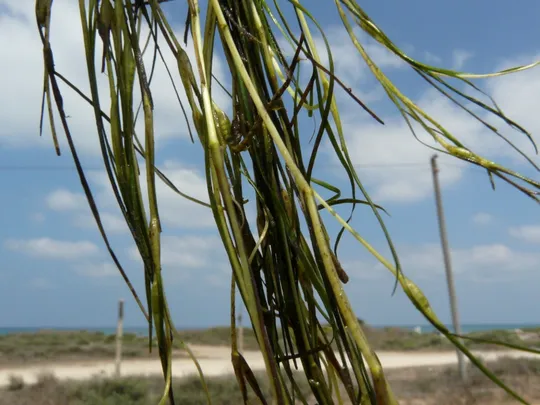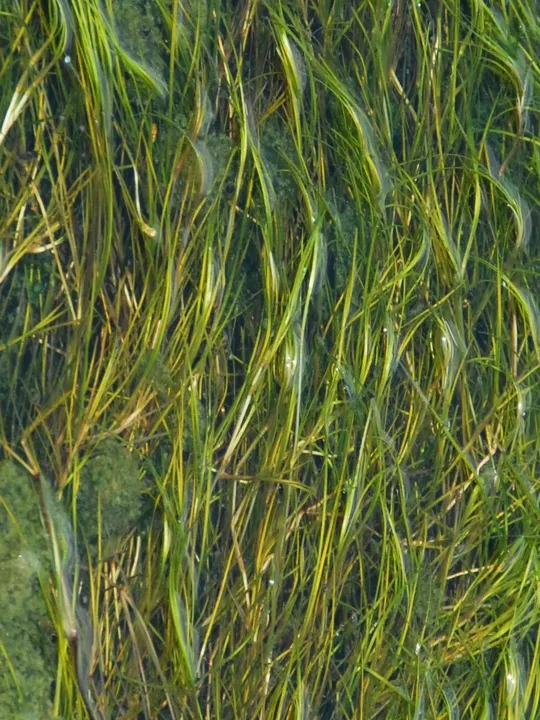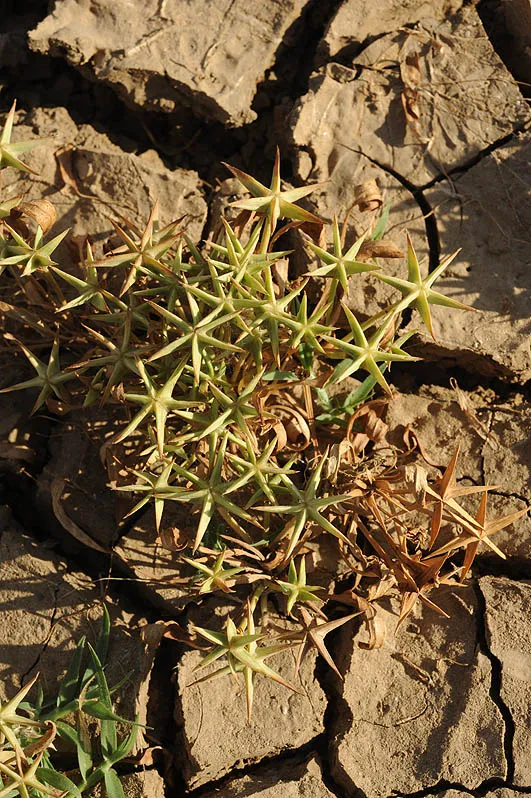Wigeongrass, Sea Tasselweed
Ruppia maritima


All
parts of the plant are used as food for fish and fowl.
Ruppia maritima is now found in
five regions: the Carmel Coast, Pleshet, the Jordan Valley, the Dead Sea region
and the Arava. Eight sites are known in the country, although according to
estimates there are twelve sites. It was once found on the Carmel Coast and has
been located again at Atlit; in Pleshet R. maritima is known from Ashkelon and from Wadi Shikma; in the Jordan Valley it is known
from the Jericho area, in the Dead Sea region it is found in Neve Zohar and in
Neot HaKikar; in the Arava in Wadi Tsin and the Elat salt marsh. R. maritima is extinct in two regions: the Acre Valley, where it was collected
several times in 1926-1960 in Acre and the Kishon salt marsh and from the
northern Negev from where it was collected once at Gilat in 1959 by Michael
Zohary, but has not been found there since.
Salt marshes and pools of saline or brackish water.
Ruppia
is the only genus in the Ruppiaceae family which is
often considered part of the Potamogetonaceae family. Seven species are known
worldwide and two species in Israel: R. maritima
and R. cirrhosa, both submersed plants of saline
or brackish water bodies.
·
The number of Ruppia maritima populations in Israel is declining: the number of regions has
decreased from seven to five and the number of sites has decreased as well.
·
The information regarding
most of the populations (except for the Atlit salt pans) is not up to date and documentation
should be updated.
·
The destruction
of the Kishon salt marsh and development pressures and pollution in the Na'aman
salt marsh apparently led to the disappearance of R. maritima from the Acre
Valley. The species is threatened by the possible disappearance of the old salt
ponds at Atlit and the changes the Zohar and Neot HaKikar salt marshes are
undergoing due to falling groundwater levels and rezoning of land for
agricultural use.
·
R. maritima
is not protected in Israel in declared nature reserves.
·
In the
Mediterranean countries it is classified at this stage as LC (Least Concern),
but despite its broad distribution it is estimated that the species is in
decline.
Detailed surveys of saline and brackish water bodies
should be conducted to obtain an updated estimate of the Ruppia maritima
population numbers and its sites and of the degree of stability of the populations
at each site. This information will make it possible to formulate management
and conservation recommendations.
Ruppia maritima grows in
Europe, Asia, North America and Australia, in brackish or saline water bodies, particularly
in coastal areas. It is common in all the European and Mediterranean countries,
including Egypt and Sinai.
Ruppia maritima is a submersed aquatic
plant of salt marshes and brackish wetlands found at a limited number of sites.
It grows in vulnerable locations and a decrease in the number of sites and
regions is evident. It is not globally endangered, but its range is declining in
other countries as well. The information regarding the plant in Israel is not
complete and additional surveys are required to provide a current assessment
and management recommendations.
ויזל, י. וליפשיץ, נ. 1979. צמחי מים בישראל הוצאת רשות שמורות הטבע.
Current Occupancy Map
| 1000 squre meter pixel | 5000 squre meter pixel | 10000 squre meter pixel | |
|---|---|---|---|
| number of observations | 0 | 0 | 0 |
| in total pixels | 0 | 0 | 0 |
| Family | Ruppiaceae |
| Classification | On the endangered species list |
| Ecosystem | Mediterranean humid |
| Chorotype | cosmopolitan |
| Conservation Site | Salt Ponds in Atlit |
| Rarity |
1
3
6
|
|---|---|
| Vulnerability |
0
3
4
|
| Attractiveness |
0
0
4
|
| Endemism |
0
0
4
|
| Red number |
1
3.2
10
|
| Peripherality | 0 |
| IUCN category | DD EW EX LC CR EN VU NT |
| Threat Definition according to the red book | Vulnerable |
 Based on:
Based on:






